Publisher: Amy Marson Creative Director: Gailen Runge Art Director / Book Designer: Kristy Zacharias Editor: Teresa Stroin Cover Designer: April Mostek Production Coordinators: Rue Flaherty and Freesia Pearson Blizard Production Editor: Alice Mace Nakanishi Illustrator: Christina Cameli Photography by Diane Pedersen, unless otherwise noted Photo Assistant: Mary Peyton Peppo Published by C&T Publishing, Inc., P.O. Box 1456, Lafayette, CA 94549 For Charlton WoodsIntroduction This book is the natural outcome of my appetite for new quilting designs, my passion for getting quilters to try new things, and my love of making complicated things simpler. I hope it thrills you. It certainly thrilled me to create it! Ive packed the book with quilting designs. They are fresh, easy-to-replicate designs that are perfect for beginner and intermediate free-motion quilters. Each design includes instructions for making it.
But thats not what makes this book special. The unique thing about this book is that the designs are all created from a small set of easily sketched shapes. Think circles, wavy lines, and loopsthings you could doodle in a heartbeat. Combining and recombining this group of nine simple elements gave me hundreds of design possibilities. Ive picked my favorites, from straightforward to striking, to share with you. Working with simple shapes gives you a head start on the quilting design.
Your mind already understands how the shapes are formed, so you just need a little practice putting them together. Thinking about quilting this way, even beginners can make beautiful and interesting designs. You dont have to know how to draw, you dont need experience, and you dont even need a fancy machine! I quilt on my domestic machine, and Ive created these designs with the home machine quilter in mind. If you want to try new things with your quilting, you just need a place to start. I hope the pages that follow give you that starting place. Heres to making beautiful things happen.Find Your Favorite Designs Following are the nine elements that together make up all the designs in this book. Heres to making beautiful things happen.Find Your Favorite Designs
Following are the nine elements that together make up all the designs in this book. Heres to making beautiful things happen.Find Your Favorite Designs Following are the nine elements that together make up all the designs in this book.
Following are the nine elements that together make up all the designs in this book.
Ive picked simple shapes that are easy to sketch. Keep in mind this idea of sketching. Free-motion quilting for most home quilters is more sketchy than precise. Dont stress.  CIRCLE The circle is surely one of the most useful shapes in quilting. Circles have an attractive effect when quilted, and they are quite versatile for filling in space.
CIRCLE The circle is surely one of the most useful shapes in quilting. Circles have an attractive effect when quilted, and they are quite versatile for filling in space.
Are your circles lopsided or oval sometimes? Mine too! Occasionally youll leave a circle open. Sometimes many circles will be joined together into pebbling or pebble lines. These types of designs are described further in . 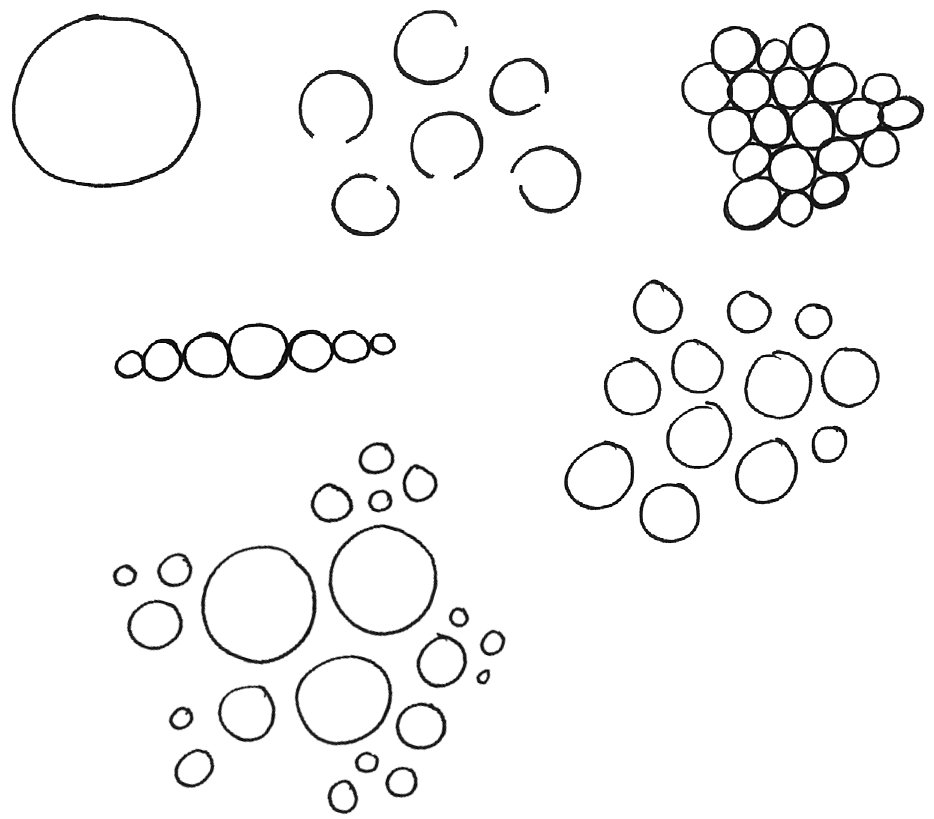
 CURVING LINES Lines with gentle curves provide great texture and frequently get us from one place to the next in our designs. These lines dont need to be precise or perfect.
CURVING LINES Lines with gentle curves provide great texture and frequently get us from one place to the next in our designs. These lines dont need to be precise or perfect. 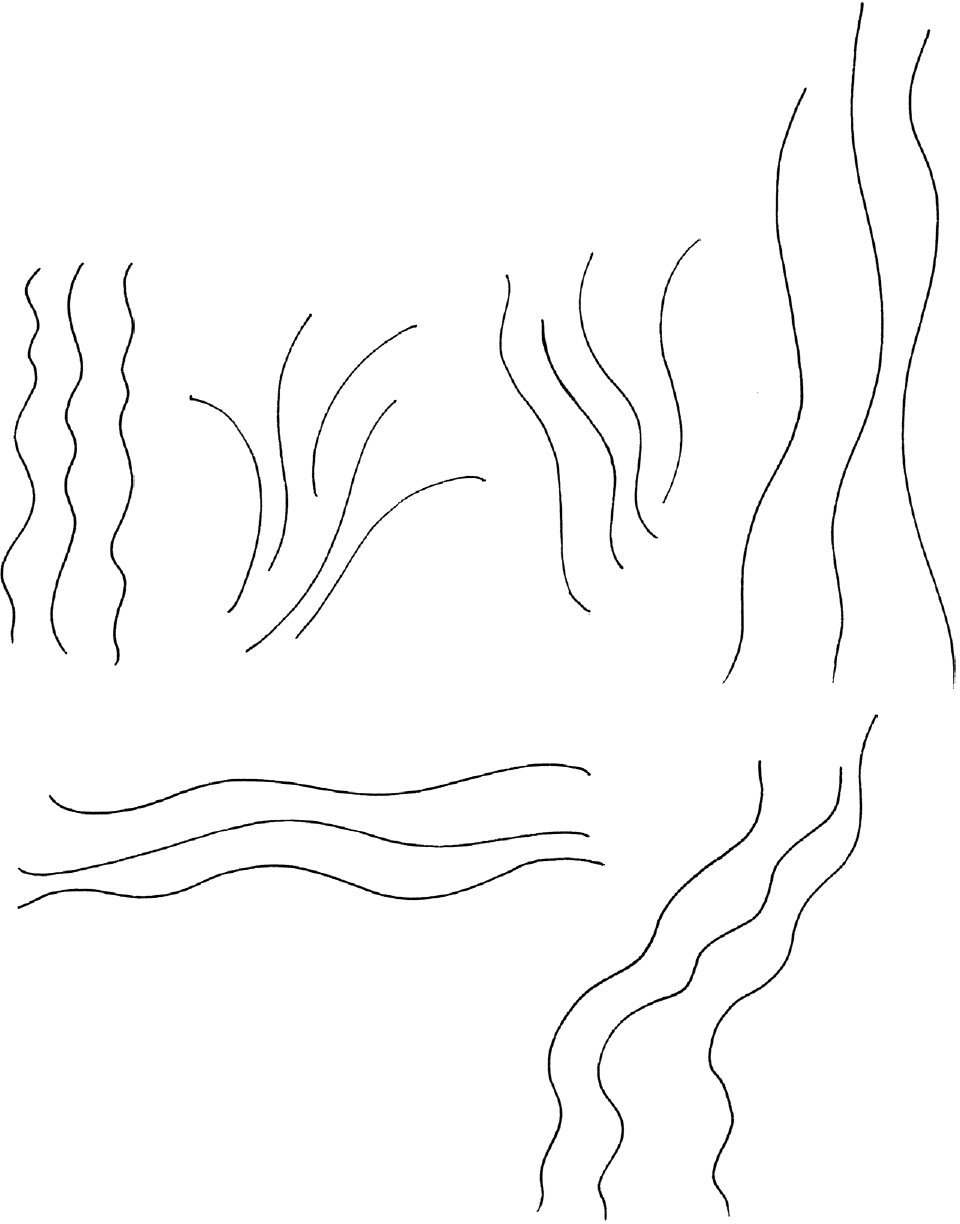
 LOOP Shaped like a cursive letter e, loops are well loved by beginning quilters.
LOOP Shaped like a cursive letter e, loops are well loved by beginning quilters. 
 LOOP Shaped like a cursive letter e, loops are well loved by beginning quilters.
LOOP Shaped like a cursive letter e, loops are well loved by beginning quilters.
They are sometimes tall, sometimes squat. You may string together several loops in a row. 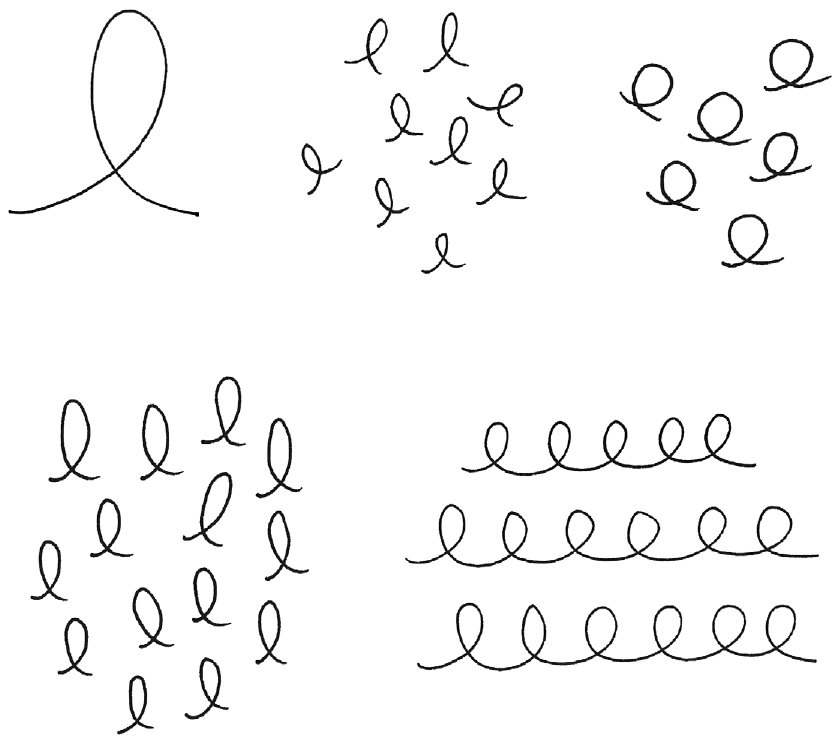
 DROP The drop shape is pointed at one end and curved at the other. It can be fat or skinny as needed. Sometimes the point of the drop will be left open. Sometimes a drop will bend to one side.
DROP The drop shape is pointed at one end and curved at the other. It can be fat or skinny as needed. Sometimes the point of the drop will be left open. Sometimes a drop will bend to one side.
Open drop shapes can be easily joined in a fan arrangement or a vertical column. 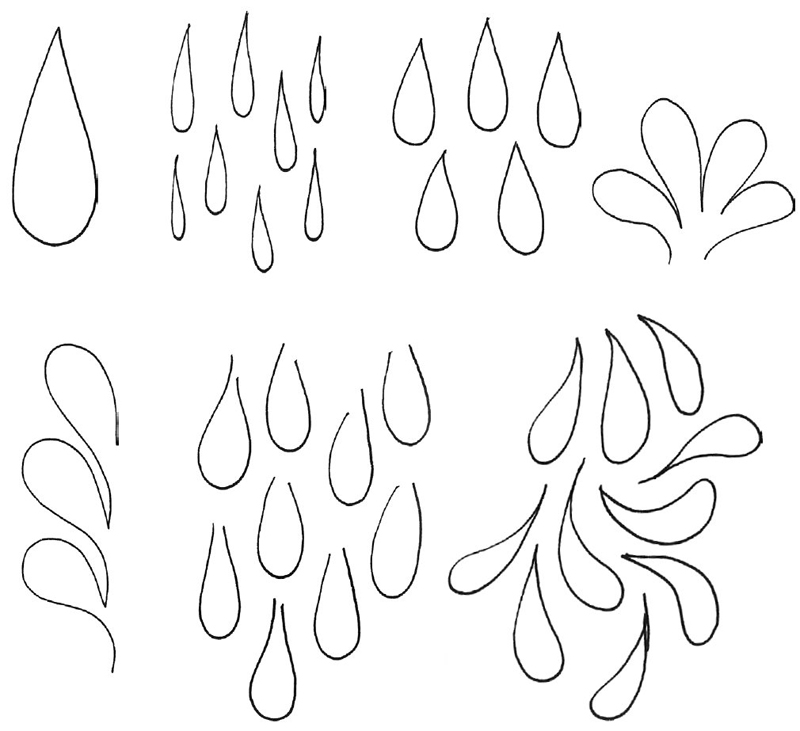
 SPIRAL Spirals can take on a lot of looks and are great space fillers. Most often you will make a path into the middle of a spiral, come to a point, and then work your way back out in the open space of the inward spiral path. If youre filling a space with a spiral, the spiral should go right up against the first edge you pass. But make sure to leave room along the opposite edge (as well as between the spiral revolutions) to allow space to work back out of the spiral. Spirals can be just a hint of a whirl or tightly wound, or made skinny by traveling back out along the original inward spiral path.
SPIRAL Spirals can take on a lot of looks and are great space fillers. Most often you will make a path into the middle of a spiral, come to a point, and then work your way back out in the open space of the inward spiral path. If youre filling a space with a spiral, the spiral should go right up against the first edge you pass. But make sure to leave room along the opposite edge (as well as between the spiral revolutions) to allow space to work back out of the spiral. Spirals can be just a hint of a whirl or tightly wound, or made skinny by traveling back out along the original inward spiral path.
You will often use spirals in rows. 
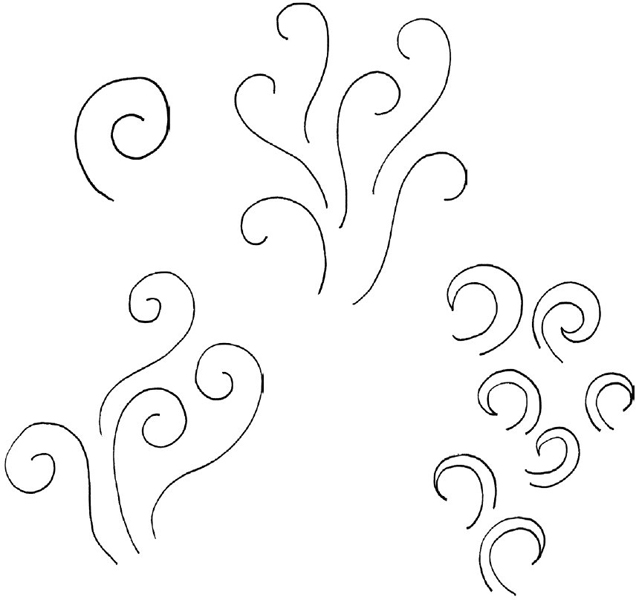
 Occasionally, your design will depend on exiting the spiral along the inside or the outside. In these illustrations, the blue line travels along the inside and the red line travels along the outside of the spiral.
Occasionally, your design will depend on exiting the spiral along the inside or the outside. In these illustrations, the blue line travels along the inside and the red line travels along the outside of the spiral. 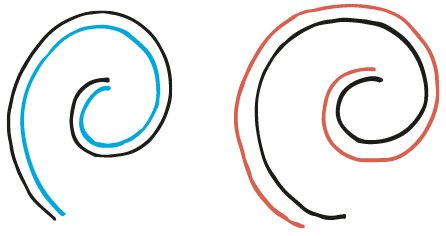
 LEAF At its simplest, the leaf design is two gentle curves that meet at a point. Occasionally you will keep the bottom ends of the curves apart to create an open leaf shape. Leaves are sometimes worked into flower shapes.
LEAF At its simplest, the leaf design is two gentle curves that meet at a point. Occasionally you will keep the bottom ends of the curves apart to create an open leaf shape. Leaves are sometimes worked into flower shapes.
Do remember that Mother Nature rarely makes her leaves exactly the same, so we neednt either. 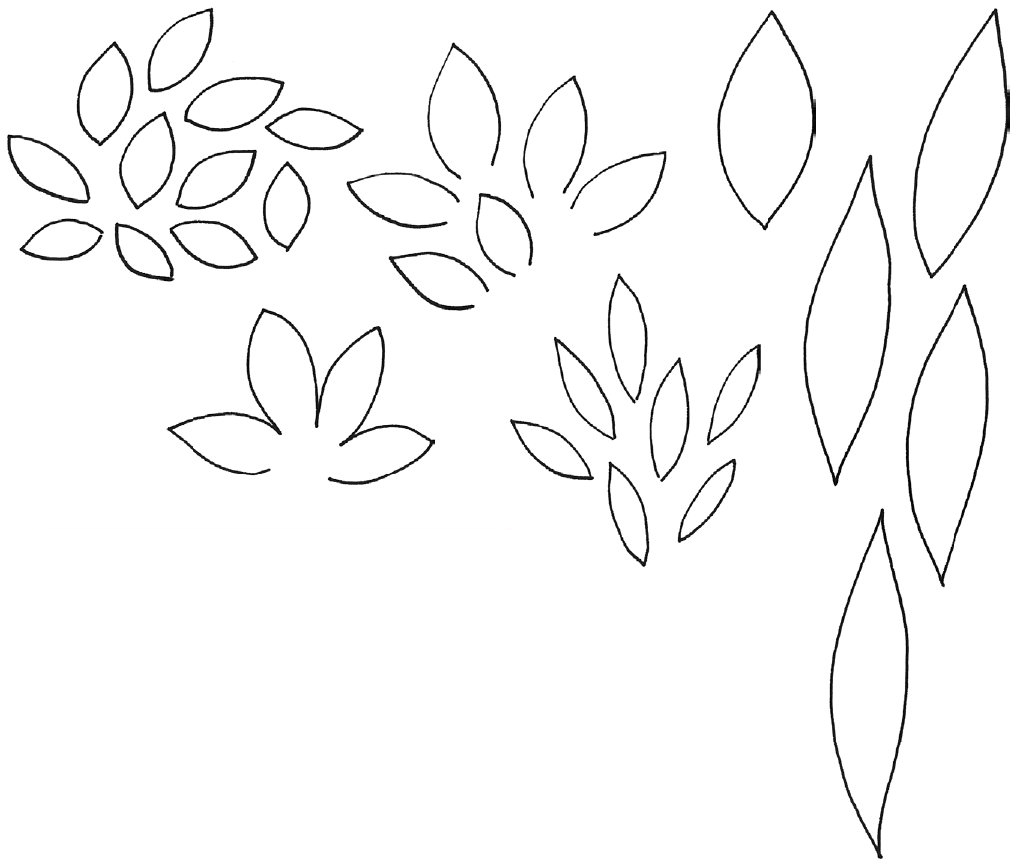
Next page
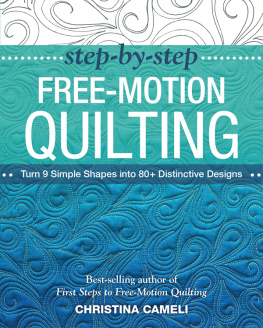

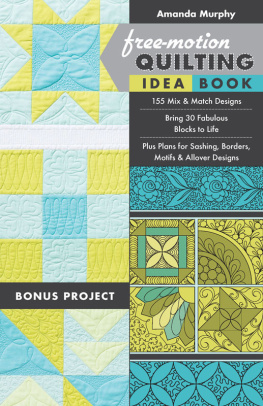
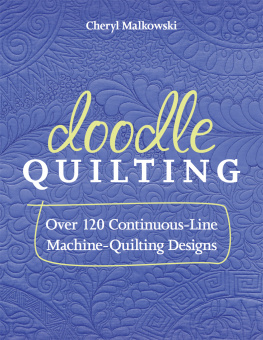

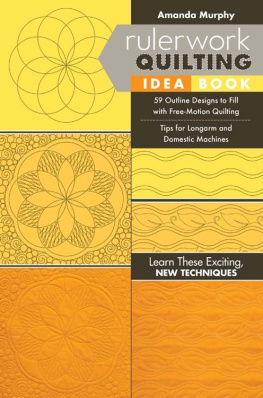

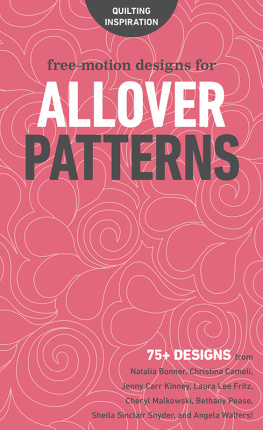
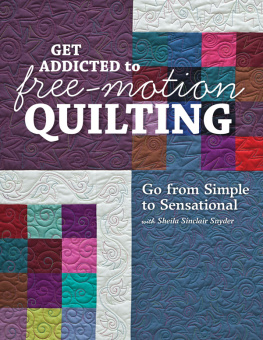
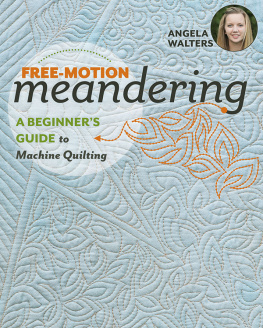
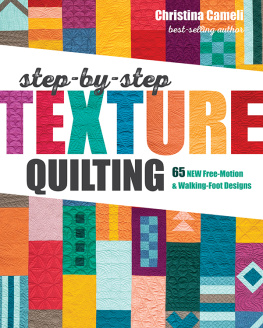


 Following are the nine elements that together make up all the designs in this book. Heres to making beautiful things happen.Find Your Favorite Designs
Following are the nine elements that together make up all the designs in this book. Heres to making beautiful things happen.Find Your Favorite Designs CIRCLE The circle is surely one of the most useful shapes in quilting. Circles have an attractive effect when quilted, and they are quite versatile for filling in space.
CIRCLE The circle is surely one of the most useful shapes in quilting. Circles have an attractive effect when quilted, and they are quite versatile for filling in space.
 CURVING LINES Lines with gentle curves provide great texture and frequently get us from one place to the next in our designs. These lines dont need to be precise or perfect.
CURVING LINES Lines with gentle curves provide great texture and frequently get us from one place to the next in our designs. These lines dont need to be precise or perfect. 
 LOOP Shaped like a cursive letter e, loops are well loved by beginning quilters.
LOOP Shaped like a cursive letter e, loops are well loved by beginning quilters. 
 DROP The drop shape is pointed at one end and curved at the other. It can be fat or skinny as needed. Sometimes the point of the drop will be left open. Sometimes a drop will bend to one side.
DROP The drop shape is pointed at one end and curved at the other. It can be fat or skinny as needed. Sometimes the point of the drop will be left open. Sometimes a drop will bend to one side.
 SPIRAL Spirals can take on a lot of looks and are great space fillers. Most often you will make a path into the middle of a spiral, come to a point, and then work your way back out in the open space of the inward spiral path. If youre filling a space with a spiral, the spiral should go right up against the first edge you pass. But make sure to leave room along the opposite edge (as well as between the spiral revolutions) to allow space to work back out of the spiral. Spirals can be just a hint of a whirl or tightly wound, or made skinny by traveling back out along the original inward spiral path.
SPIRAL Spirals can take on a lot of looks and are great space fillers. Most often you will make a path into the middle of a spiral, come to a point, and then work your way back out in the open space of the inward spiral path. If youre filling a space with a spiral, the spiral should go right up against the first edge you pass. But make sure to leave room along the opposite edge (as well as between the spiral revolutions) to allow space to work back out of the spiral. Spirals can be just a hint of a whirl or tightly wound, or made skinny by traveling back out along the original inward spiral path.

 Occasionally, your design will depend on exiting the spiral along the inside or the outside. In these illustrations, the blue line travels along the inside and the red line travels along the outside of the spiral.
Occasionally, your design will depend on exiting the spiral along the inside or the outside. In these illustrations, the blue line travels along the inside and the red line travels along the outside of the spiral. 
 LEAF At its simplest, the leaf design is two gentle curves that meet at a point. Occasionally you will keep the bottom ends of the curves apart to create an open leaf shape. Leaves are sometimes worked into flower shapes.
LEAF At its simplest, the leaf design is two gentle curves that meet at a point. Occasionally you will keep the bottom ends of the curves apart to create an open leaf shape. Leaves are sometimes worked into flower shapes.